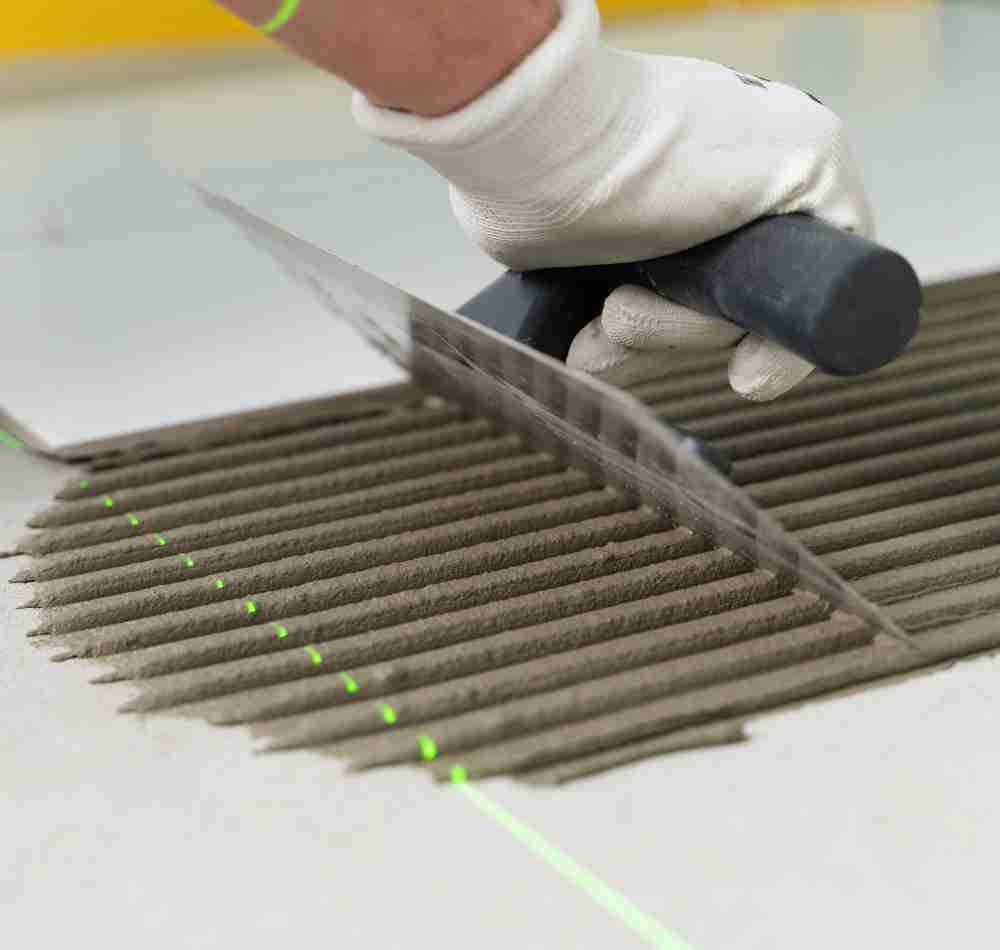Understanding the Importance of Tile Adhesives
As we dream of beautiful living or commercial spaces, one thing that strikes our mind is the interior designs. In making our interiors beautiful, the product that is of extreme importance is the tile adhesive. Whether you’re aiming for a stunning wall finish or tackling a complex tiling job, choosing the best wall tile adhesive is essential. This product plays an important role in constructing successful projects.
In this blog, let us look into the importance of tile adhesive in construction. Also, we will know in detail how to use tile adhesive safely and effectively.
Tile adhesives enable us to make varied floorings and wall tile designs. They provide a strong bond that sticks the tile to the flooring. Thus we can imagine tile adhesive as a glue or a sticking material. This product is essential for a worker installing the tile or any interior designer designing strong and long-lasting designs. Even if you are planning DIY, tile adhesive makes your task easier. This flexible glue can be used to fix various types of tiles. It includes mosaic tiles, ceramic tiles, and clay tiles of small and large dimensions. Additionally, understanding the chemistry of tile adhesive chemicals is necessary for a safe and effective installation.
The Traditional Way
When it comes to installing a tile, generally two methods are available. The traditional and the modern way. The traditional way involves cement and sand mixed with water. These ingredients mixed in standard proportion work as an adhesive. There are two major varieties of this traditional method. The first one is using mud wherein, mud beds were laid and over it, tiles were installed. In the second method, a mixture of cement and sand was used. Another traditional method of tile installation was dry-set-mortar. As the name suggests, tiles were arranged into the dry mortar, and later on, water was applied to activate the adhesive properties. The last method was of laying thick mortar beds which was mostly used for large and heavy tiles.
Limitations in the Traditional Method
- Traditional methods took a long time for the curing process from several hours to several days. This led to delays in project completion.
- They were not durable in areas of high footfall or moist areas. Their adhesion properties were comparatively weak.
- There were several issues in leveling the field and getting uniform consistency. This made the installation process not only time-consuming but also didn’t provide a good finishing.
- Traditional methods had poor flexibility compared to modern adhesives leading to cracking issues.
- Large quantities of adhesive were used in the tilling process making the entire structure heavy.
- The entire process from mixing to application was labor intensive, thereby making it costly.
- The varieties of adhesives were very limited. Their use was restricted to certain specified tiles.
- They lacked waterproofing qualities which made them unsuitable for use in wet places like bathrooms and toilets.
From the above limitations, we can conclude that the challenges that emerged from the use of traditional adhesives gave a push to the research and development of new adhesives.
Evolution of Tile Adhesives
The development of modern adhesives has continued for over a period of time. Initially, latex-modified thinset mortar was introduced. They were superior compared to traditional ones on the basis of their properties like adhesion, flexibility, and durability. Along with it, their curing time was quite low as compared to mud beds. Another addition to this list was Epoxy Adhesives. They were known for their bonding capabilities in areas of high stress and their exceptional waterproof qualities. The tile chemical formulation was such that it provided resistance to moisture. The third variation in this chain of modern adhesives was called Modified Thinset. Though widely used in the 20th century, these adhesives are still one of the most preferred choice for tile installation. Its qualities like resistance to water, temperature, and strength have made it the most reliable choice.
With changing times, the demand for adhesives with simple application methods grew. These demands led to the introduction of Premixed Adhesives. It is mostly used in projects of small scale and its specialty lies in reducing the installation period.
Modern Tile Adhesives
In contemporary times, the trend of tiling walls is growing. This has led to demand for larger tiles and the best wall tile adhesives that can hold on their weight. It provides longer working times as the chemical properties don’t let the adhesive dry immediately. Additionally, modern tiles have better waterproofing qualities that ensure their durability in wet and damp places. They also come in sheet format, which can further make the process easier. Thus, we can see that the tile adhesives have evolved over period of time from being labor-intensive to more efficient and versatile adhesives.
Magnus Ventures Eco-Friendly Tile Adhesives
Magnus Ventures, a pioneer in eco-friendly construction materials, offers the best tile adhesive in India. It is a leading name in the manufacturing of eco-friendly tile adhesives. Their special focus on research and development has helped them produce one of the best environmentally viable tile adhesives. Their tile adhesive chemical formulations have made their product retain water for a longer duration and prevent the need for any chemical-based solvent. It helps tiles stay in the proper place for longer times. The usage of non-toxic environment-friendly products helps in reducing carbon footprint as well as indoor air quality is maintained. Some materials used in the production process are made from renewable and recycled content. Over a period of time they naturally get biodegraded naturally.
Despite all these properties, the products have similar strength to that of any chemical-based adhesive. This makes it a perfect choice for modern-day builders and contractors.





